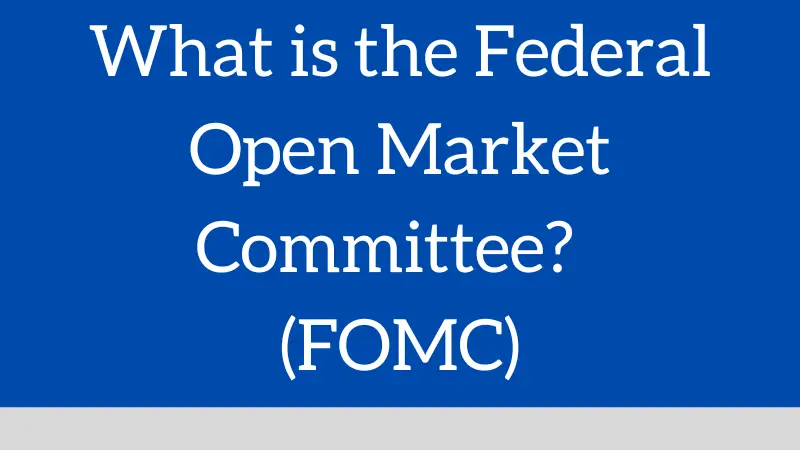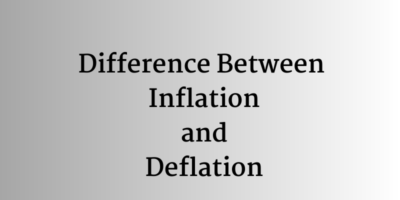What is the Federal Open Market Committee?

What is the Federal Open Market Committee? The Federal Open Market Committee (FOMC) is the branch of the U.S. Federal Reserve System responsible for setting monetary policy in the United States. The FOMC consists of 12 members, including the seven members of the Board of Governors of the Federal Reserve System and five of the 12 presidents of the Federal Reserve Banks, who serve on a rotating basis.
What Does the Federal Open Market Committee Do?
The Federal Open Market Committee (FOMC) is responsible for setting monetary policy in the United States. Its primary objective is to promote price stability, maximum employment, and moderate long-term interest rates in the U.S. economy.
To achieve these goals, the FOMC uses a variety of tools, including:
- Setting the federal funds rate: The FOMC sets a target range for the federal funds rate, which is the interest rate at which banks lend money to each other overnight. By adjusting the federal funds rate, the FOMC can influence borrowing costs for businesses and consumers, which can impact economic growth and inflation.
- Conducting open market operations: The FOMC can buy and sell U.S. Treasury securities on the open market to influence the money supply and short-term interest rates. When the FOMC buys Treasuries, it injects money into the banking system, which can stimulate lending and economic growth. When it sells Treasuries, it withdraws money from the banking system, which can slow inflation.
- Adjusting reserve requirements: The FOMC can also adjust the number of reserves that banks are required to hold, which can impact the amount of money banks have available to lend.
- Providing forward guidance: The FOMC can use its public statements to provide guidance on the future direction of monetary policy, which can influence market expectations and long-term interest rates.
The FOMC’s decisions have a significant impact on financial markets, interest rates, and the broader economy, and its actions are closely watched by investors and policymakers around the world.
What is the History of the FOMC?
The Federal Open Market Committee (FOMC) was created in 1933 as a response to the Great Depression, which had caused widespread economic distress in the United States. The FOMC was established under the Banking Act of 1933, which also created the Federal Deposit Insurance Corporation (FDIC) and separated commercial and investment banking.
Initially, the FOMC was responsible for implementing monetary policy by setting reserve requirements and open market operations. However, its role expanded over time to include setting interest rates and guiding the overall direction of monetary policy.
One of the most significant changes to the FOMC occurred in 1977 when Congress passed the Federal Reserve Reform Act. This legislation clarified the objectives of monetary policy and required the Federal Reserve to report regularly to Congress on its actions and decisions. The act also expanded the role of the FOMC in setting monetary policy by giving it greater control over the money supply and interest rates.
Since its creation, the FOMC has played a crucial role in guiding the U.S. economy through periods of economic growth, recession, and financial crisis. Its decisions have had far-reaching impacts on financial markets and the broader economy, making it one of the most powerful economic policy-making bodies in the world.
Who is On the Federal Open Market Committee?
The seven members of the Board of Governors of the Federal Reserve System are appointed by the President of the United States and confirmed by the Senate. They serve 14-year terms, which are staggered so that one term expires every two years. The current Committee Members of the Board of Governors as of February 2023 are:
- Jerome H. Powell (Chair)
- Lael Brainard (Vice Chair)
- Michael S. Barr (Vice Chair for Supervision)
- Michelle W. Bowman (Board of Governors)
- Lisa D. Cook (Board of Governors)
- Philip N. Jefferson (Board of Governors)
- Christopher J. Waller (Board of Governors)
The Five Presidents of the Federal Reserve Banks who serve on the FOMC are selected on a rotating basis, with each president serving a one-year term as a voting member. The current voting Committee Members of the FOMC are:
- John C. Williams – President of the Federal Reserve Bank of New York (Vice Chair of the FOMC)
- Austan D. Goolsbee – President of the Federal Reserve Bank of Chicago
- Neel Kashkari – President of the Federal Reserve Bank of Minneapolis
- Patrick Harker – President of the Federal Reserve Bank of Philadelphia
- Lorie K. Logan – President and Chief Executive Officer of the Federal Reserve Bank of Dallas.
The current Alternate Committee Members are:
- Thomas I. Barkin – President and Chief Executive Officer of the Federal Reserve of Richmond
- Raphael W. Bostic – President of the Federal Reserve Bank of Atlanta
- Mary C. Daly – President of the Federal Reserve Bank of San Francisco
- Loretta J. Mester – President of the Federal Reserve Bank of Cleveland
- Helen Mucciolo – Interim First Vice President of the Federal Reserve Bank of New York
How Do the Federal Reserve Banks Rotate on the FOMC?
The four Federal Reserve Banks that are permanent members of the FOMC are the Federal Reserve Bank of New York, the Federal Reserve Bank of Chicago, the Federal Reserve Bank of Richmond, and the Federal Reserve Bank of San Francisco. The President of the Federal Reserve Bank of New York always serves on the FOMC, while the other three Banks rotate their representation on the Committee.
The remaining eight Federal Reserve Banks are represented in a three-year rotating cycle, with three Banks serving at any given time. The rotation cycle is as follows:
| 2024 | 2025 | 2026 | |
|---|---|---|---|
| Members | New York Cleveland Richmond Atlanta San Francisco | New York Chicago Boston St. Louis Kansas City | New York Cleveland Philadelphia Dallas Minneapolis |
| Alternate Members | New York† Chicago Boston St. Louis Kansas City | New York† Cleveland Philadelphia Dallas Minneapolis | New York† Chicago Richmond Atlanta San Francisco |
How Often Does the FOMC Meet?
The FOMC meets eight times a year, approximately once every six weeks. The meeting dates for the current year are usually announced well in advance and can be found on the Federal Reserve’s website. During the meetings, the committee members review economic and financial conditions, discuss policy options, and vote on whether to change the target for the federal funds rate, which is the interest rate at which banks lend to each other overnight.


